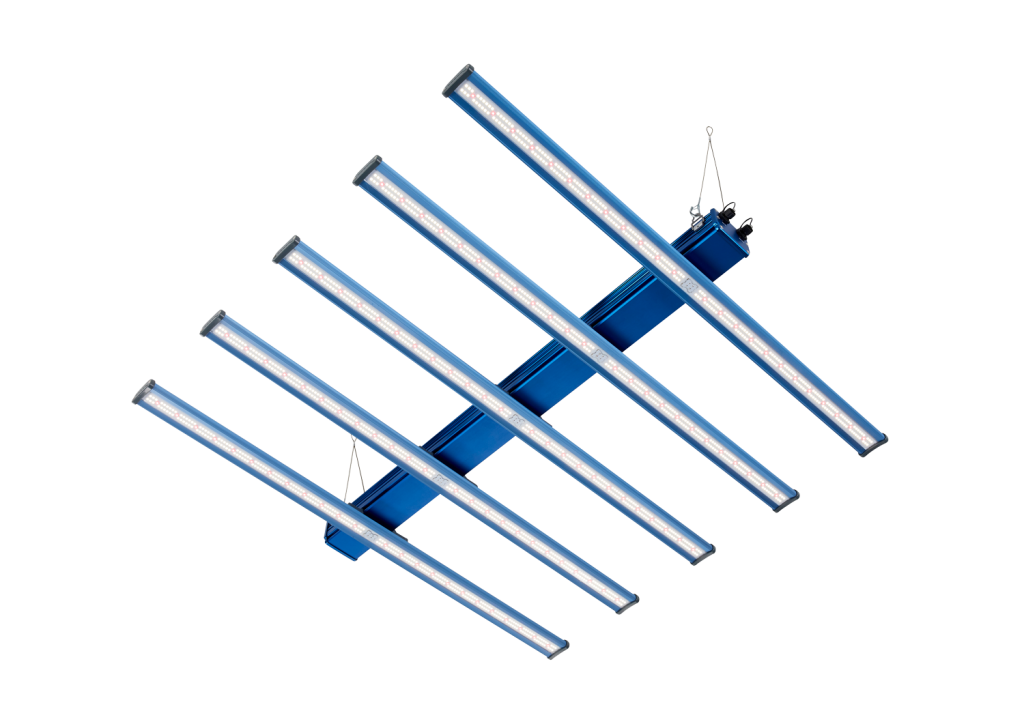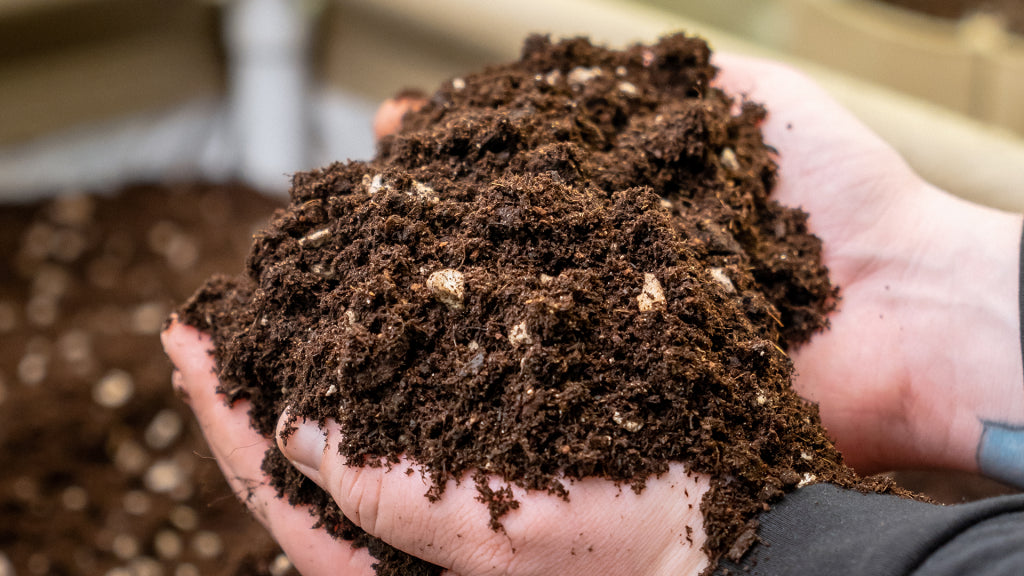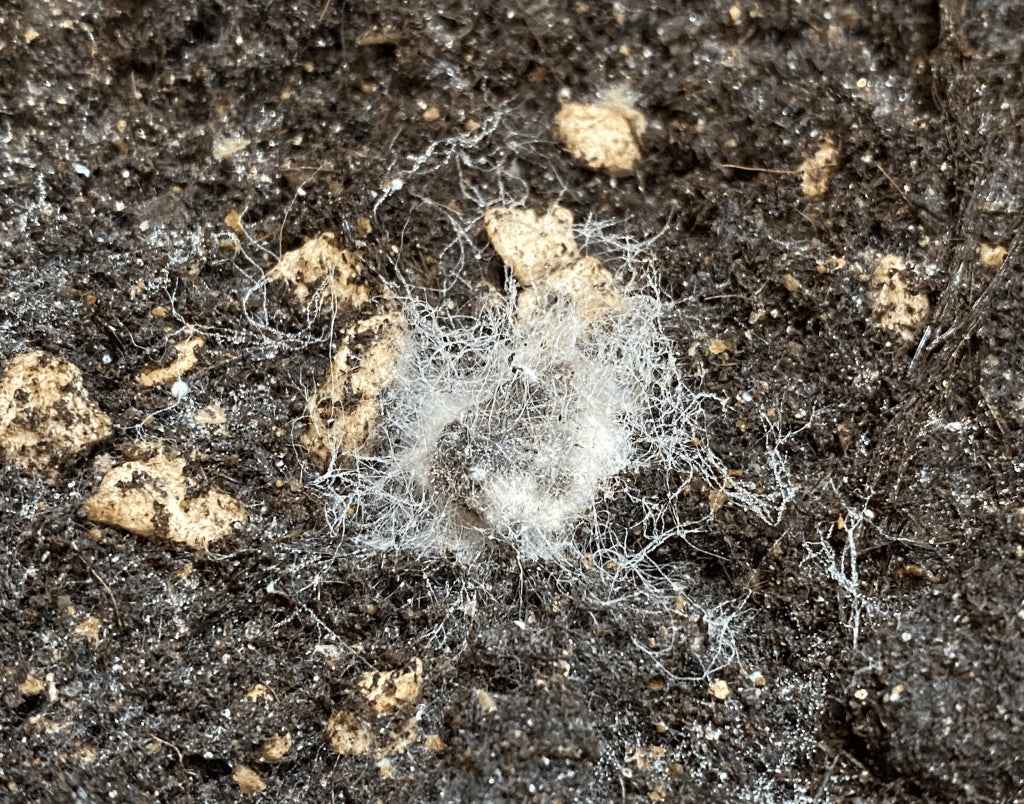Quick Overview:
This blog entry is a bit of a beast, so here are the key takeaways:
- LED grow lights are more efficient than HID lights, offering higher photon efficacy and full spectrum output.
- LEDs produce less infrared radiation compared to HID lights, affecting plant warming and metabolic rates.
- Indoor growers using LEDs should increase air temperatures to compensate for the lack of infrared radiation.
- Phototoxicity and photoinhibition can occur under LEDs, particularly due to an overabundance of red light.
- Full-spectrum LED lights help mitigate the risk of phototoxicity by providing a balanced light spectrum.
- Leaf temperature is crucial in preventing phototoxicity; ideal leaf temperature is around 25°C (77°F).
- Air temperatures in LED grow rooms may need to be around 28°C – 29°C (84°F) for optimal leaf temperature (warm season plant species).
- Living soil growers under LEDs should also monitor soil temperature, as cooler conditions can slow microbial activity.
- Operating LEDs at a high light intensity can deplete nutrients at a quicker rate in living soils.
- Organic living soils under high intensity LEDs may require more frequent top dressing or liquid feeding.
- Running LEDs below full power can often lead to better results.
- Targeted dehumidification is necessary in LED grow rooms to manage relative humidity, especially in low air exchange environments.
- CO2 enrichment can enhance photosynthetic rates under LED lighting, especially at higher light intensities.
- Balancing light intensity, air and soil temperature, and humidity is crucial for living soil growers using LED lights.
Introduction
More and more indoor growers are choosing to cultivate their plants under LED grow lights. Here at Ecothrive, we’re the first to celebrate the myriad benefits that this new generation of horticultural lighting technology brings to our customers, not least higher photon efficacy (more plant-usable light per watt), full spectrum output, lower cost of ownership, longer lifespan and the ability to dim the light without negatively affecting spectral distribution. Some LED grow lights even give growers the option of tuning the spectral output so that the light emitted is optimal for the different stages of the life-cycle.

However, while LED lights are renowned for their energy efficiency (photon efficacy), there is a subtle difference between the output of modern LED grow light fixtures compared with legacy HID (high-intensity discharge) horticultural lighting technologies (high pressure sodium (HPS), metal halide (MH) and ceramic metal halide (CMH)) that all growers using LEDs need to be aware of.
Infrared and Spectrum
When it comes to providing an optimal spectrum for growing plants, the Sun remains our gold standard. After all, plants have evolved for millions of years to exploit this extra-special mix of electromagnetic radiation. While full-spectrum LED grow lights often claim to replicate the sun’s natural radiance, there’s a crucial difference between the output of full spectrum LEDs and the incident solar radiation we receive from the Sun outdoors: infrared.
Infrared is electromagnetic radiation that lies beyond ‘red’. It is a very wide band of energy starting at Near-Infrared (NIR) (700 nm to 1,400 nm) and ending in far infrared (FIR) (15,000 nm to 1 mm). Infrared is invisible to the human eye. Around half of the solar radiation that reaches the surface of our planet is infrared! HID grow lights also emit a significant amount of infrared—as high as 55% of the total output.
LED grow lights, on the other hand, produce virtually no infrared directly from the diodes themselves, but they still produce some infrared and convection heat from the fixture itself.
So—while HID lamps direct a strong beam of infrared directly at the plants below, LEDs do not. Now it’s easier to see how LEDs manage to produce so much visible / plant-usable light so efficiently! But a lot of this ‘efficiency’ comes at the expense of infrared output.
Growers who move from HID lighting to LED need to increase air temperatures to compensate for the lack of infrared.
Why is Infrared Content Important?
Certain parts of the infrared band are very proficient at exciting di-polar molecules—the dipolar molecule we’re interested in here is—you guessed it—H2O or water. Healthy plant tissue is full of water! So, certain bands of infrared radiation can have a pronounced ‘warming effect’ on plant tissue—think of a sunbathing crocodile! This warming effect in turn, affects the plant’s metabolic rate, including photosynthesis—the conversion of carbon dioxide, water, and light energy into storable energy, carbohydrates. Plant species that have evolved to colonise elevated habitats are particularly reliant on infrared to warm plant tissue so that it reaches optimal temperatures. Remember, air temperatures are cooler in higher elevations—so this warming effect is really important for them!
Growers who move from HID lighting to LED need to increase air temperatures to compensate for the lack of infrared.
Light Intensity, Spectrum and Environmental Factors Relating to Phototoxicity
As mentioned earlier, plants have evolved to exploit full-spectrum light—the whole ‘rainbow’ of colours that are contained in ‘white’ sunlight. This process of using the energy in light to convert carbon dioxide and water into carbohydrates (energy stores) is called photosynthesis; it is primarily driven by the absorption of light by various pigments and complexes primarily located in the plant’s leaves. These pigments and complexes work together in what are known as photosystems. There are two main types of photosystems—each of these systems is equipped with a range of pigments that absorb different wavelengths of light, enabling the plant to utilise a broad spectrum of light for photosynthesis.
Phototoxicity in higher plants refers to the damage caused to plant tissues and cellular structures due to excessive exposure to light. This phenomenon can occur when plants receive too much light in general or an overabundance of a particular wavelength, exceeding their photosynthetic capacity. When light intensity surpasses the plant’s photosynthetic capacity, it can lead to damage to proteins, lipids, and nucleic acids which, in turn, causes cellular damage and impaired function.
Photoinhibition is a specific form of phototoxicity where the photosynthetic apparatus is inhibited by excessive light. An overabundance of red photons, in particular, are known to cause photoinhibition. Full-spectrum light, which mimics the natural solar spectrum, provides a balanced distribution of wavelengths. This allows all the different photosynthetic pigments in the plant to absorb light efficiently and work optimally.
Leaf Temperature and Phototoxicity
To prevent phototoxicity, it’s crucial to control not just the intensity, duration and quality of light but also the temperature of the leaves. The effect of leaf temperature on phototoxicity in plants is a complex interaction that can significantly impact plant health and photosynthesis.
Photosynthesis is temperature-dependent. Each plant species has an optimal temperature range for photosynthesis. Within this range, enzymatic reactions involved in photosynthesis operate efficiently. As leaf temperature increases beyond this optimal range, the efficiency of these enzymes decreases, leading to reduced photosynthetic rates. Conversely, if leaf temperatures are too cool, photosynthetic rates can be markedly reduced. LED growers of warm-season, light-loving plants typically elevate the air temperature in their indoor gardens to compensate for the lack of infrared (radiant heat) emitted from their LED fixtures.
The optimal leaf temperature remains the same whatever type of lighting technology you’re using. A good target for leaf temperature is 25°C (77°F). Leaf temperature can be measured quickly and easily using an inexpensive infrared thermometer. While air temperatures in HPS / MH indoor gardens are optimal at 25°C (77°F) due to the radiant heating effect on leaf tissue, LED indoor gardens, in the absence of IR, should run at around 28°C — 29 (84°F).
Of course, raising air temperatures has side effects. If nutrient reservoirs are located in the growing space, the elevated temperatures will warm up the nutrient solution, risking depletion of dissolved oxygen levels. Growing media, especially in fabric pots, will also be subject to greater evaporation and potentially shorter wet / dry cycles.
(Check out our blog on VPD (vapour pressure deficit) to learn more about how plant transpiration rates are dictated by air temperature, leaf temperature, relative humidity and air movement.)
Steps for Using Infrared Thermometers in LED Grow Spaces:
-
Selecting Target Leaf Surfaces:
- Choose representative leaves within the canopy for temperature readings. These leaves should be at various heights and positions to capture a comprehensive view of the environmental conditions experienced by the plants.
-
Taking Infrared Readings:
- Point the infrared thermometer at the selected leaf surfaces and take readings. Ensure that the thermometer is held at an appropriate distance to capture an accurate temperature reading without interference from surrounding objects.
LEDs stand out for their energy efficiency and reduced heat emission compared to traditional lighting sources. This efficiency translates into more usable light energy for photosynthesis, contributing to increased plant productivity.
Balancing Act: Wattage vs. Coverage
Another critical consideration in LED grow lights is the balance between wattage and coverage area. Most indoor growers allocate between 400W and 500W of lighting power per square metre for flowering. Typically, this translates to incident light intensity (PPFD) of around 600 and 1000 µmol/m²/s. Remember, oversaturating a small area with high-intensity light can lead to stress or burn, whereas insufficient intensity in a larger space may hinder plant growth and result in leggy, stretched plants.

Lower light intensities across longer photoperiods (15 – 18 hours) are required in the vegetative stage, with incident light intensity typically ranging between 200 and 500 µmol/m²/s. Gradual, incremental increases are recommended to minimise plant stress and foster robust foliage development. As plants transition to the flowering stage, a gradual increase in intensity, reaching around 600 to 1000 µmol/m²/s encourages prolific flowering and bud development, coupled with a shorter photoperiod (12 hours). For more information on the total light requirements of your chosen plant species, look up ‘Daily Light Integral’ or DLI.
Living Soil and Cool Grow Room Air Temperatures
When the plant’s leaves are too cool (due to LED grow lights not emitting the same amount of radiant heat combined with insufficient supplementary heating) they will not be transpiring effectively. Growers know—with low transpiration comes low nutrient uptake. Couple that with high light intensity and you have a perfect storm of deficient-looking plants. Calcium deficiency can be the first to show up. Poor calcium uptake can lead to problems in new growth such as leaf deformations, you may see necrotic spots on middle-older leaves, and in some an underdeveloped root system. Living soil growers under LEDs should also monitor soil temperature, soil cooler than 18°C can slow microbial activity and reduce nutrient uptake.
Organic living soil can struggle to keep up with high-intensity LEDs, especially if air temperatures are too cool. Pushing incident light intensity toward or upward of 1000 µmol/m²/s can sometimes cause issues where there are not enough nutritional resources being made available to keep up with the sort of development that corresponds with such high light intensity. Remember, living soil works in a fundamentally different way to hydroponics where the plants enjoy constant access to directly assimilable nutrition via liquid mineral feeds. In living soil, high light intensity can quickly deplete the soil reserves and, in those situations, growers can either adopt a more hands-on top dress regime or supplement with some organic liquid feeds or compost extracts. Often, dimming the lighting down to enable the soil biology to deliver nutrients at a rate that keeps the plants sufficiently fed in your living soil system is a good approach. Less can be more when you have a limiting factor.
Targeted Dehumidification Can Be Useful in LED Grow Rooms
LED growers using extraction fans (air exchange) to regulate the air temperature of their grow rooms or grow tents may find themselves stuck in between a rock and a hard place, especially during the cooler months. They need to slow down their fans in order to keep air temperatures high so they dial down the air-exchange provided by their inline extraction fans in order to guard the precious convection heat generated by their LED fixtures! However, this reduction in air exchange can create knock-on effects in the growing environment such as elevated relative humidity and depleted levels of atmospheric carbon dioxide. Many LED growers, especially those working in low air exchange environments (for heat conservation purposes) will combat high humidity head on with a dehumidifier. When sizing your dehumidifier, make sure that it has at least the same moisture removing capacity (typically specified in litres per day or LPD) as the total volume of water / nutrient solution your plants require in the same period.
LEDs stand out for their energy efficiency and reduced heat emission compared to traditional lighting sources. This efficiency translates into more usable light energy for photosynthesis, contributing to increased plant productivity.
What about CO2 Enrichment?
Enriching the environment with supplemental CO2 not only mitigates the risk of CO2 depletion bottlenecking plant development, but it also enhances the rate at which plants can convert light energy into sugars. This elevated photosynthetic activity fuels growth, leading to more robust plants with increased biomass. While ambient CO2 levels in the atmosphere hover around 400 parts per million (ppm), increasing CO2 concentrations in the cultivation space to around 1000 to 1500 ppm during the light period can significantly enhance photosynthetic rates. This practice is particularly impactful in indoor environments where natural CO2 exchange may be limited. Simple charts like this can be a great tool to understanding the basics of the correlation between light intensity and CO2.

As more and more of us embrace the advancements in LED grow light technology, it’s crucial that we understand and adapt to the unique characteristics of these lights. While LEDs offer energy efficiency and a spectrum that closely mimics natural sunlight, the absence of significant infrared radiation necessitates fundamental adjustments in environmental control, particularly in regulating air and leaf temperatures. Furthermore, the balanced spectrum of LEDs plays a pivotal role in preventing phototoxicity, ensuring that plants receive a harmonious blend of light wavelengths crucial for optimal growth. By carefully managing these factors, along with the strategic use of CO2 enrichment, growers can better harness the potential of LED technology, leading to robust, healthy plants and bountiful yields.
Don’t forget to share your experiences below.
Happy growing,
Team Ecothrive




Leave a comment
This site is protected by hCaptcha and the hCaptcha Privacy Policy and Terms of Service apply.